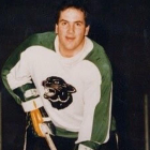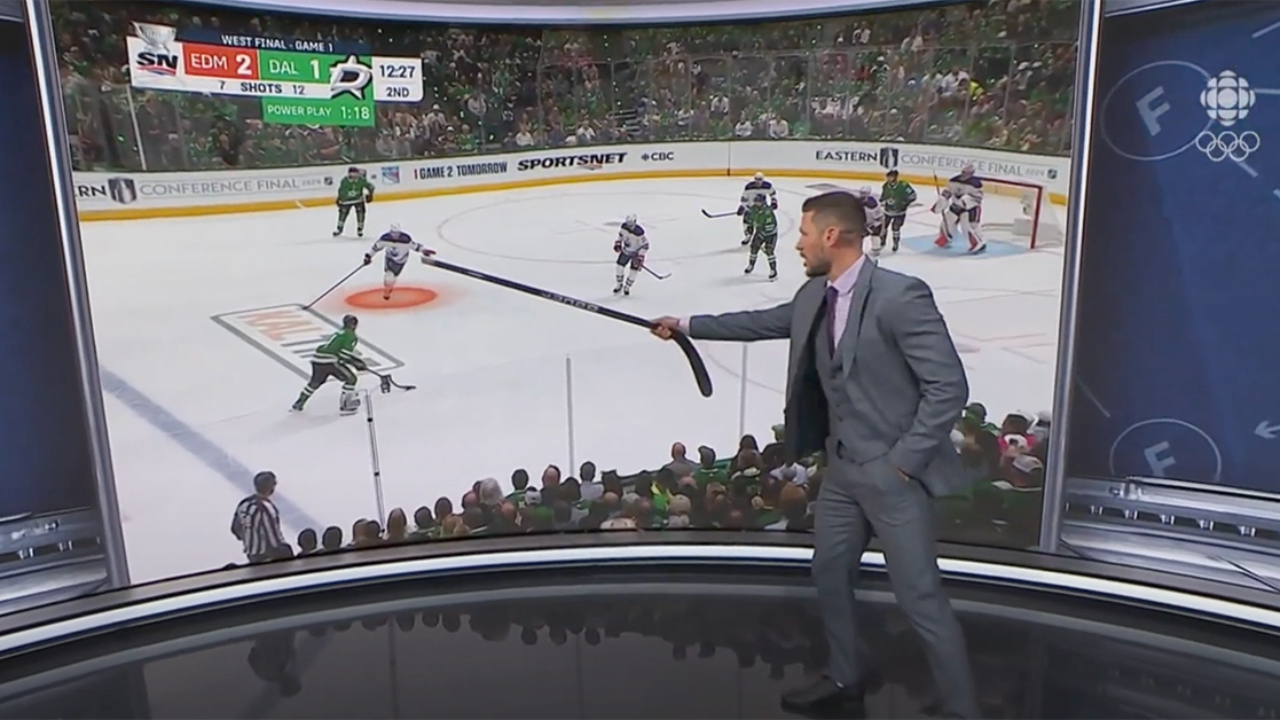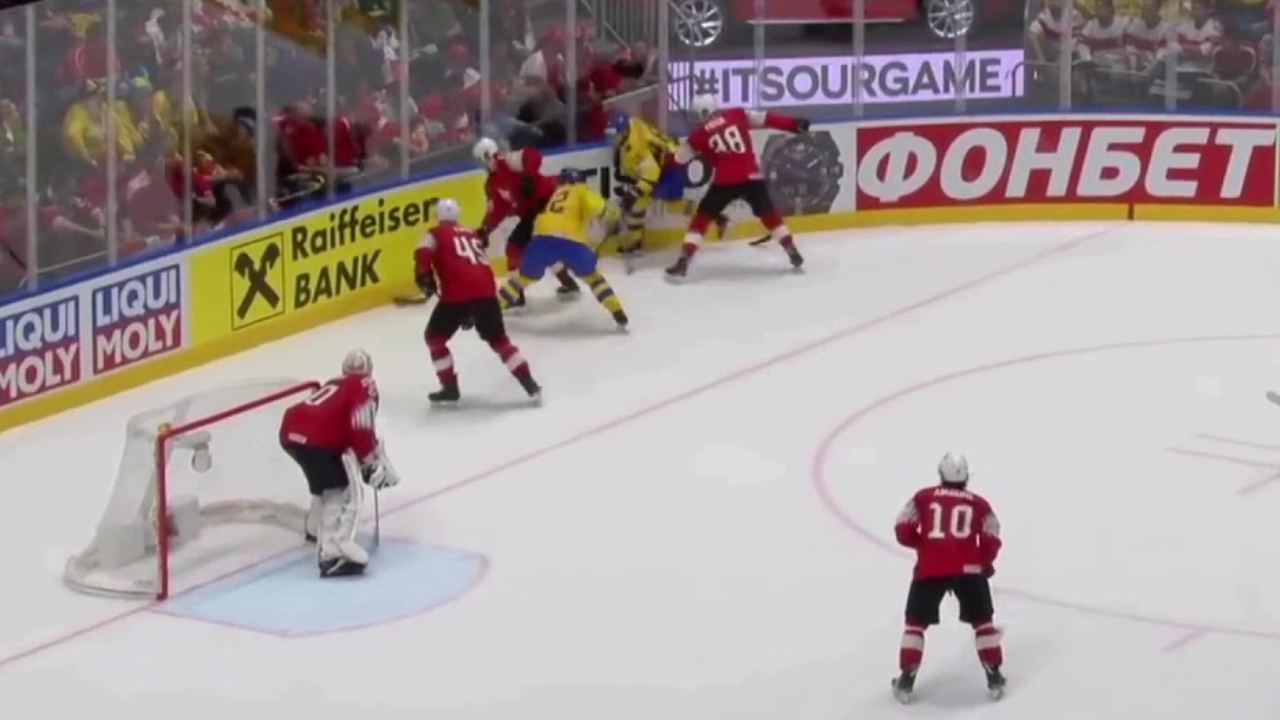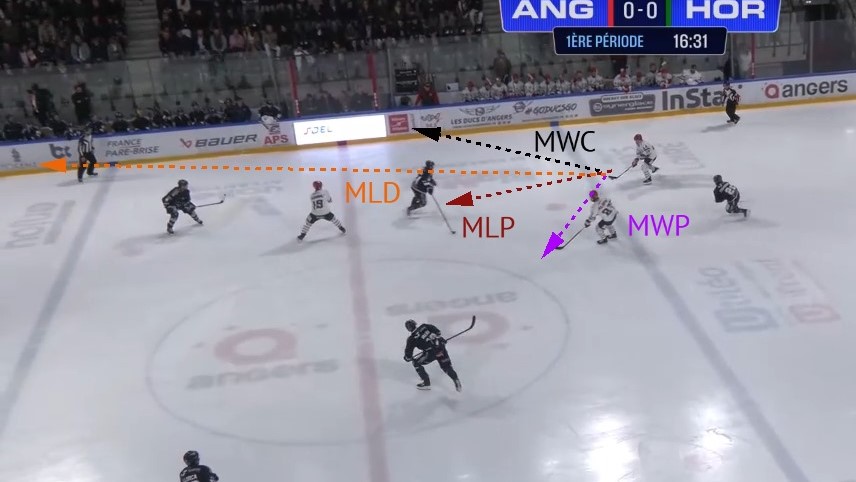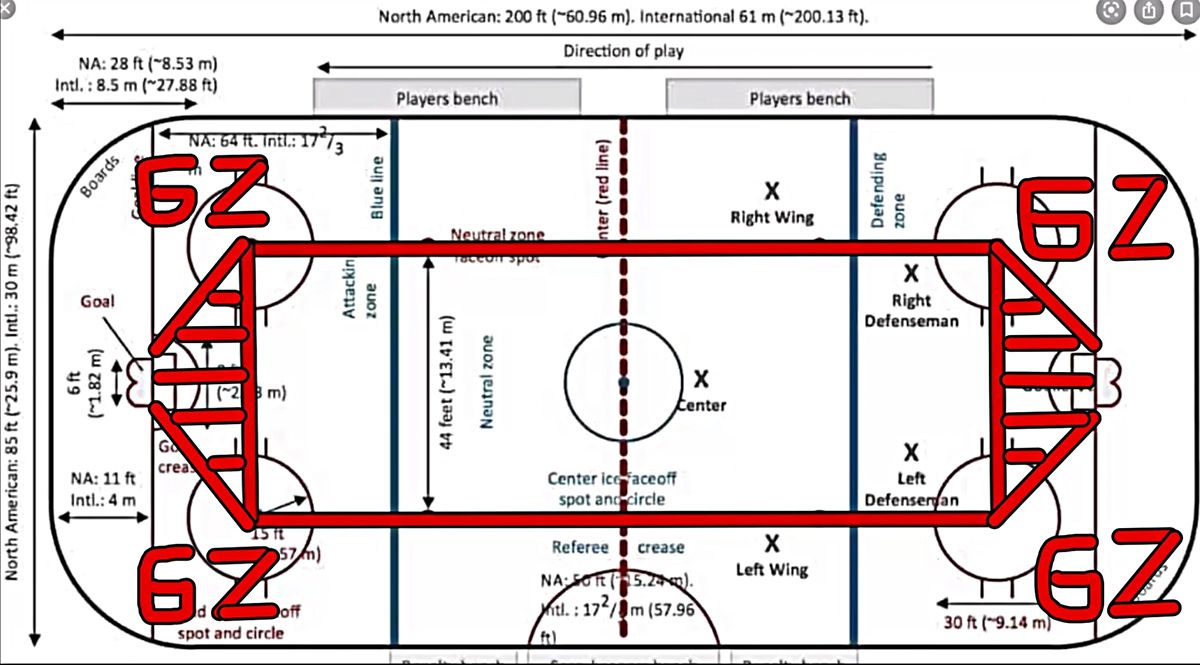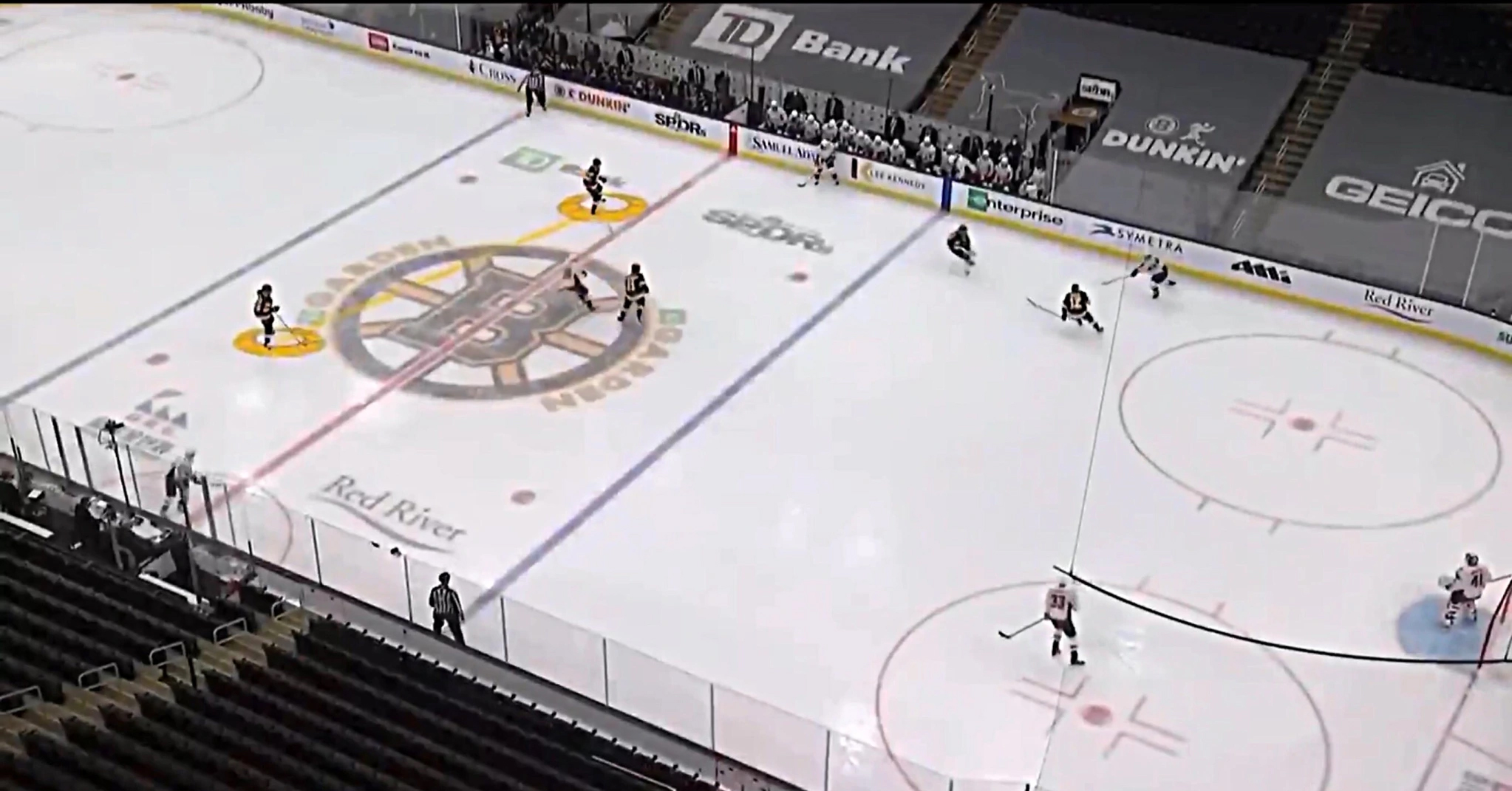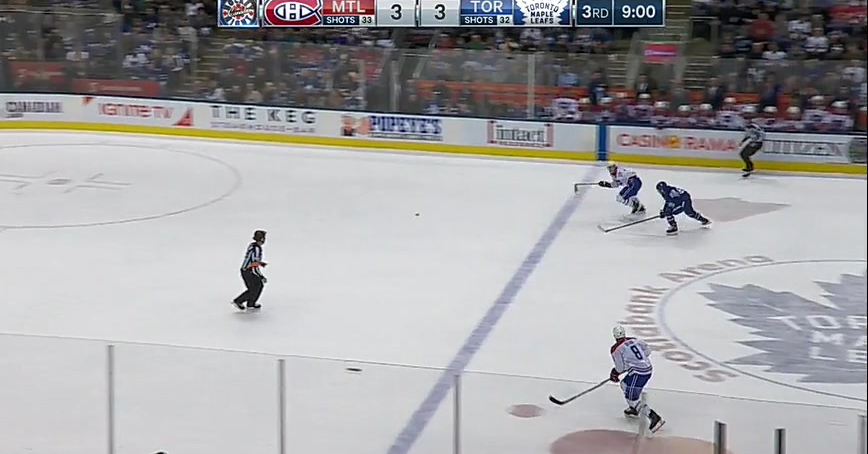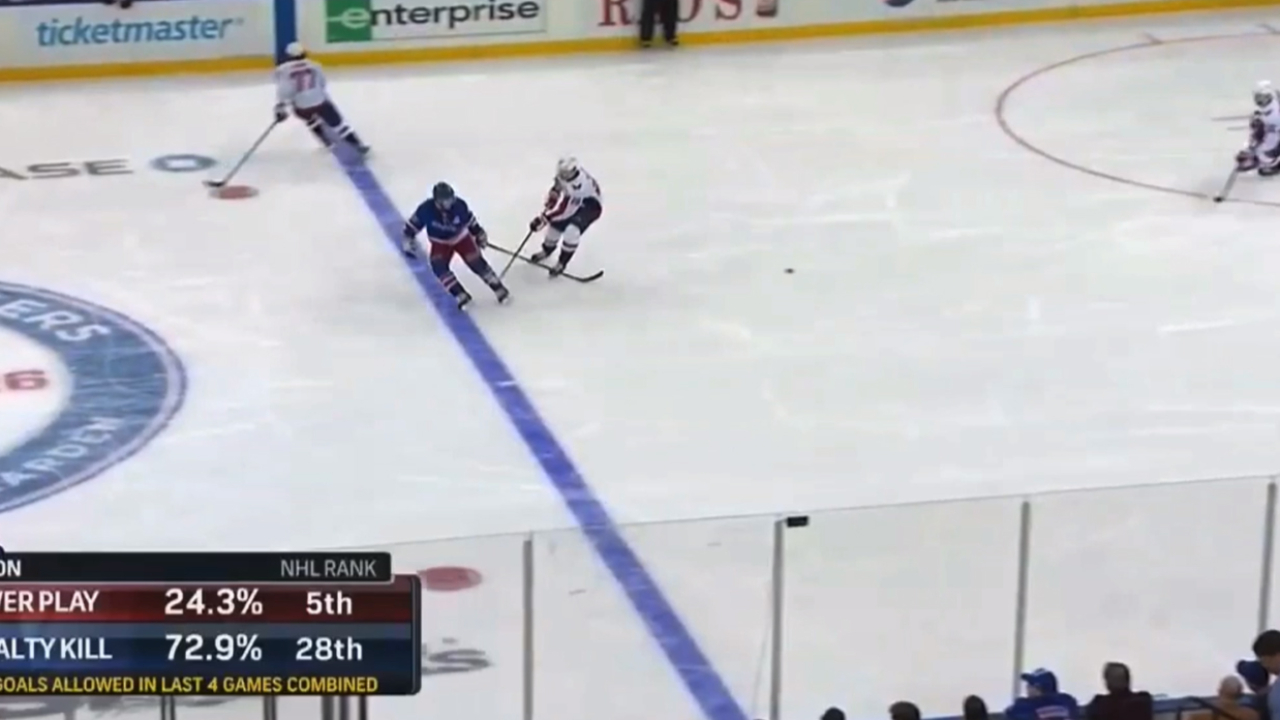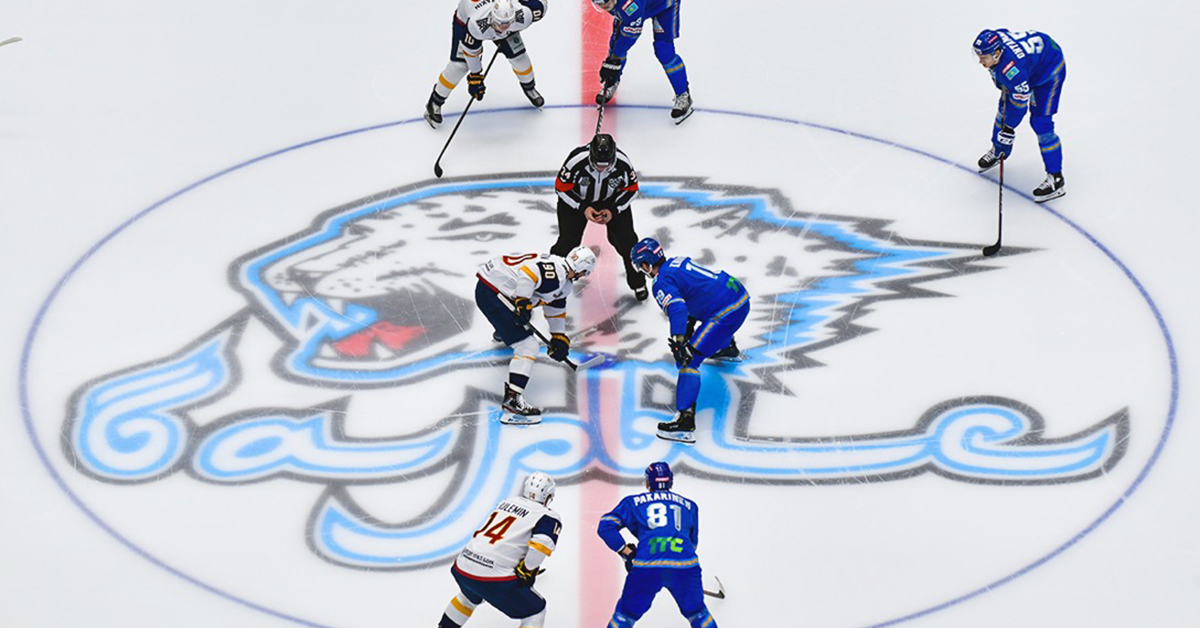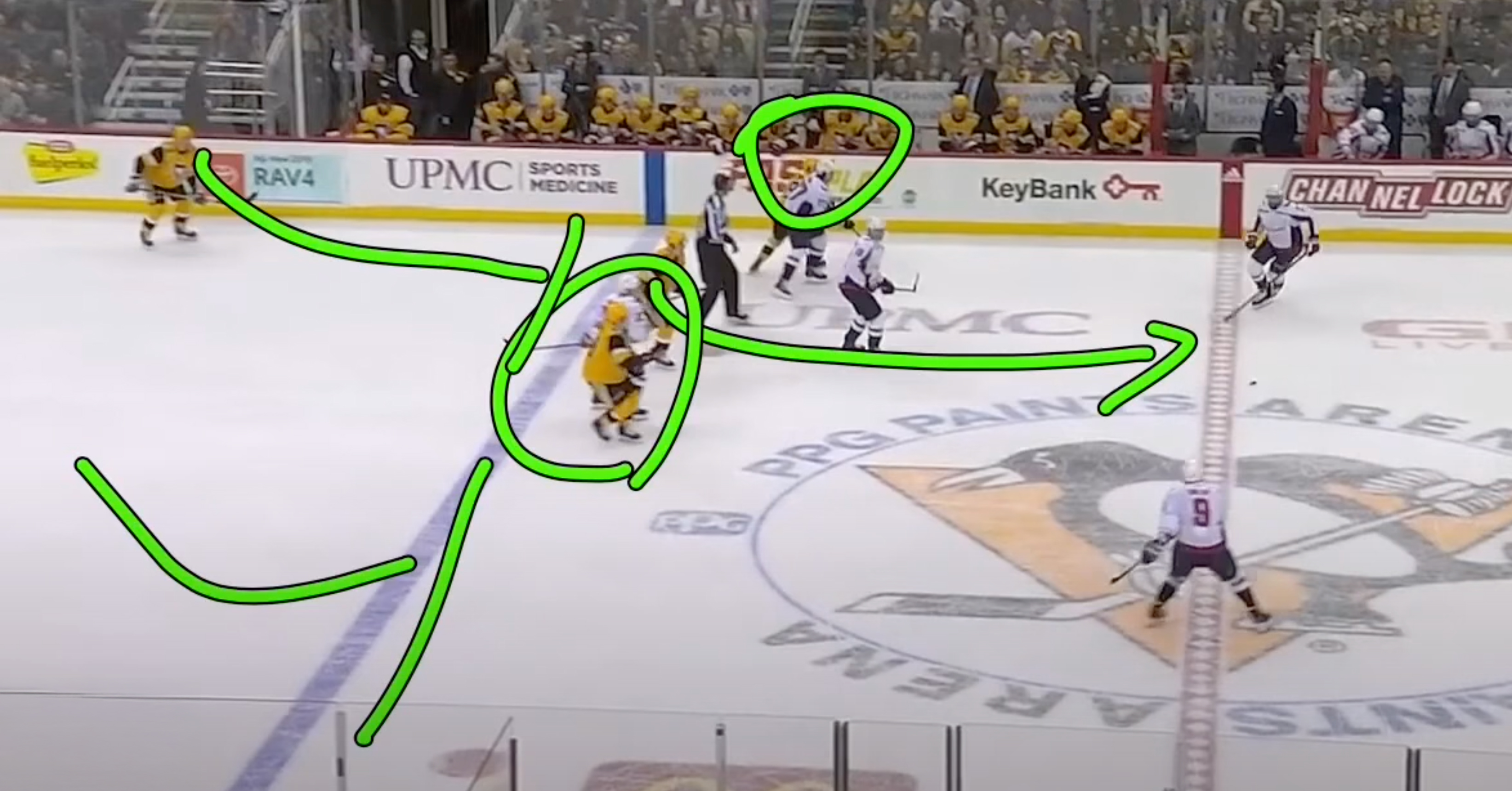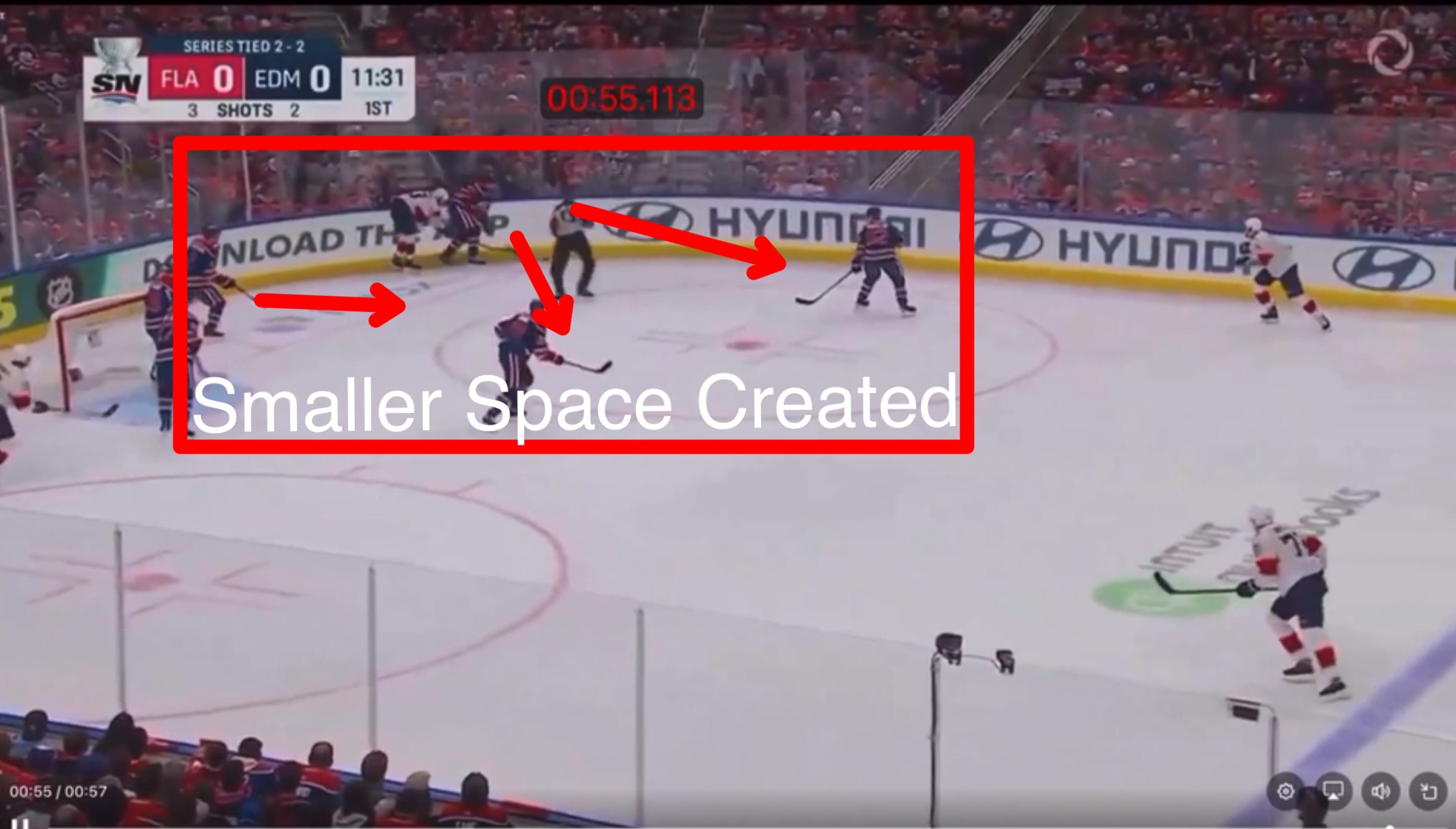
There are two concepts in total football that apply to hockey and they should be part of your team's identity. The two concepts both require players to work as a unit collectively with the flexibility to interchange positions in space to:
- Contract the ice surface to make the area being defended smaller.
- Expland the ice surface to create space to attack inside when in possession of the puck at the right opportunity.
In the video clip below the Flordia Panther's tilt the ice on the Edmonton Oilers for 56 seconds, an entire shift, by expanding the ice surface in the offensive zone relocating the puck strong side to weak side throughout the shift and working the puck N-S, E-W in zone outside the dots as a unit to create space looking for an opportunity to attack inside the dots (middle ice). Edmonton does a good job of defending middle ice in the clip but a poor job of contracting the ice in zone to create a smaller area to defend as a unit. Loose pucks are a Pressure Trigger for both teams and only one team (Florida) was winning the races to the loose pucks and pressuring up as a unit to exit the space on the puck recovery. Florida outworked Edmonton in the video which should not happen, in any zone of the ice surface, especially, the defensive zone.
Hockey is a game of battles to win the Possession Game (PG). You win the PG you generally win the hockey game. A loose puck is a Pressure Trigger which both teams should immediately recognize as an opportunity to win a puck. In the video clip there were 10 loose puck opportunities to regain puck possession. Florida won the races to all 10 loose pucks and relocated the pucks to avoid a puck battle and to create space to maintain possession.
At the end of the 56 seconds in the OZ Florida Forwards were tired and started to come off the ice which allowed Edmonton to pressure up on a puck strong side with numbers to create the smaller space to defend and to win the puck and exit the zone. The Edmonton DMAN got body and stick position on the defender and moved the puck into middle ice support to exit the zone. The contraction of the ice by the OILERS was done at the end of the shift when there were many opportunities to regain puck possession to exit the zone.
Defensive Zone Play Analysis
- The OILERS were too slow in their defensive zone and should have been reading and reacting better to the loose pucks as a unit, not individually.
- The OILERS failed to get body position and stick position on pucks to regain puck possession.
- The OILERS failed to contract the ice as a unit to create puck battle (contested puck) situations.
- The OILERS were too passive and not aggressive enough or competitive enough on loose pucks.
- The OILERS aren't the only team that struggled with the heavy forecheck pressure applied by the FLORIDA PANTHERS. To beat heavy forecheck pressure you must beat the opponent at their own game. Faster to loose pucks (win races), get body and stick position on pucks, pressure up as a unit to contain the puck battle with numbers and exit tight space with numbers.
- You must match the physicality of your opponent.
Conclusion
The Florida Panthers are back to back Stanley Cup Champions for a reason. It is obvious that the strategy and tactical play of the STC's is based on the concept of Total Football. Every NHL team should be replicating the identity of the STC's because it's the best way to play. Defence wins Championships. Winning the PG by defending up ice with a heavy forecheck in the OZ and NZ makes perfect sense. Defending your end of the rink with a heavy puck pressure game as a unit winning pucks and taking away ice to make the area to defend smaller makes perfect sense. Hockey sense makes sense, it's a simple game but hard to play.
